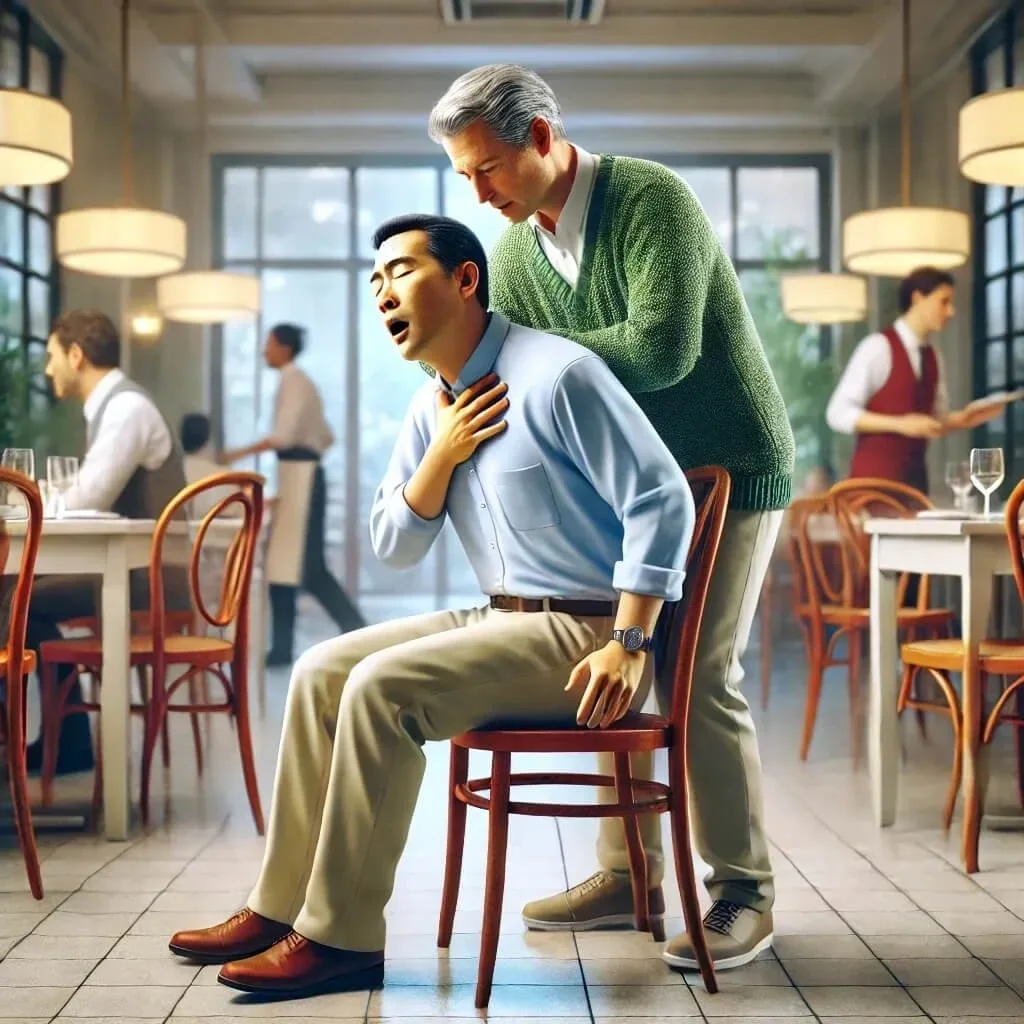Why are there different methods to overcome choking
choking with person helping with a back blow
Choking is a frightening experience, and understanding the various methods used globally to handle choking emergencies can be both life-saving and fascinating. Here at Gungahlia First Aid, we often get asked in our first aid in Canberra courses why different countries use different techniques for choking. Let’s dive into this frequently asked question and explore the reasons behind these variations while shedding light on exceptional cases involving infants and older adults.
Choking: A Universal Problem
Choking occurs when an object, such as food or liquid, obstructs the airway. It’s a universal issue, but the response techniques vary by country due to differences in medical guidelines, training protocols, and historical practices.
In Australia, the recommended approach for complete choking involves alternating up to five back blows and chest thrusts. Meanwhile, the Heimlich manoeuvre*(abdominal thrusts) is the go-to technique in the USA. Both methods aim to create enough pressure to dislodge the obstruction, but they achieve this differently.
Why Do the Methods Differ
1. Historical Development: Dr. Henry Heimlich introduced the Heimlich manoeuvre in the 1970s, gaining widespread adoption in the United States. In contrast, Australian guidelines have evolved based on research emphasizing the effectiveness of back blows and chest thrusts for generating force without causing harm.
2. Medical Guidelines: Countries often adapt their emergency protocols based on local studies. For example, Australian guidelines prioritize chest thrusts, which may be safer in specific populations, including children and older people.
3. Cultural and Training Differences: First aid training programs reflect national preferences and healthcare systems. Australians are taught alternate techniques to maximize effectiveness, while Americans rely on a single method.
Addressing Partial Choking
When the airway is partially blocked, partial choking is usually less severe but still requires attention. It often involves coughing fits, mainly when liquids “go down the wrong way.” This type of choking is more common in two distinct groups:
- Infants transitioning to solids: Babies learning to eat solid foods are still developing their swallowing skills, making them prone to choking on tiny food particles. Extra caution and supervision during mealtimes can significantly reduce these risks.
- Older adults (like me!): Let’s admit it—some of us older folks are too impatient when eating, rushing through meals without chewing properly. This habit increases the likelihood of food getting stuck in the throat. Slowing down and taking smaller bites can make a big difference.
How to Stay Safe
Regardless of where you live, knowing the choking protocol for your country can help you act quickly in an emergency. Here are some quick tips:
- In Australia: Start with five back blows, followed by five chest thrusts. Repeat as needed until the object is dislodged or the person starts breathing normally.
- In the USA: Perform abdominal thrusts (Heimlich manoeuvre) and repeat until the airway is clear.
For infants: Use back blows and chest thrusts tailored for their smaller bodies, and always seek professional training to learn the correct technique.
- For yourself: Chew your food thoroughly (especially if you’re part of the “impatient eater” club) and avoid talking or laughing with food in your mouth.
Final Thoughts
While the methods may differ worldwide, the goal is the same: saving lives. Knowing what to do in an emergency is crucial, whether you’re applying back blows, chest thrusts, or the Heimlich manoeuvre. At Gungahlin First Aid, we’re passionate about teaching these life-saving skills. Consider signing up for one of our first aid courses to gain confidence in handling choking situations—and many other emergencies.
Stay safe, chew well, and keep asking those great questions!
- The Gungahlia First Aid Team We always talk about choking in our First aid and child care courses
Disclaimer: This blog is general advice only. Always seek help from a professional when in doubt.

